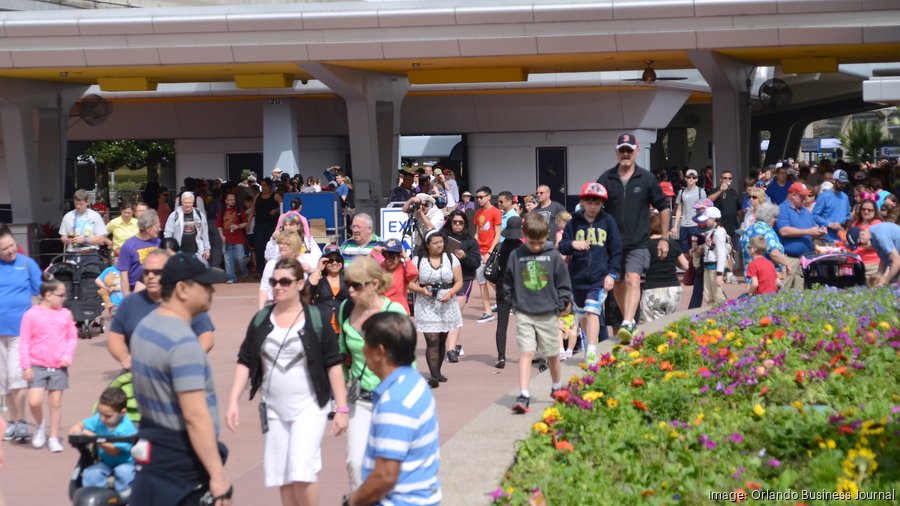Metro Orlando welcomed a mere 35.3 million tourists last year, down 53% from 76 million in 2019, according to Visit Orlando's National Travel and Tourism Week presentation on May 4.
That loss of 40.7 million tourists equates to $25 billion in lost potential visitor spending, based on 2017 data that the average visitor spends $615 per trip to Orlando, according to the Central Florida Hotel & Lodging Association's tourism calculator.
"These numbers represent a devastating impact to our local economy, businesses, friends, neighbors and colleagues," said Visit Orlando President and CEO Casandra Matej, during the presentation. "That is why the main focus for Visit Orlando is all about recovery."
The pandemic practically shut down all travel to the region last year with government lockdowns, fear of going to public places, a reduction in airline service, cancellations of conventions and other events, as well as widespread layoffs, furloughs or work hour reductions that cut into people's discretionary funds often used for vacations.
Statewide, the number wasn't any better.
Florida welcomed 86.714 million travelers in 2020, the lowest number in a decade and down 34% from the previous year, according to Visit Florida. Domestic travel was down 29.7% last year, Canadian tourism was off by 64.5% and the number of overseas visitors fell by 70.4%.
However, Matej said there are increases in lodging demand, traveler sentiment and the return of meetings and conventions — all good signs for the future. "The percentage of those planning to take a leisure trip this summer has increased to 72% and growing. [Also,] when looking at airport travel at the Orlando International Airport, we are encouraged that beginning in May, domestic seat capacity is at or above 2019 levels."
In addition, the local tourism bureau is marketing the region's safety in order to ease concerns and increase regional visitation.
Visit Orlando's current "The Wonder Remains" campaign targets nearby markets and has garnered nearly $40 million in visitor spending and a 12-to-1 return on ad investment. In addition, it held a virtual conference that showcased the region's amenities earlier this year, which may result in a similar virtual show for international markets in the future.
The good news is traveler sentiment is improving, said Erin Francis-Cummings, president and CEO of Destinations Analyst, a travel research firm, during the presentation. Concerns related to the virus — thanks to vaccinations — and finances are all declining, showing that travelers feel more optimistic, said Francis-Cummings.
"Four in 10 Americans are confident they can travel safely right now ... it's been on an upward trend since March," she said. Also, travel guilt — something that caused people to not talk about their travel due to the fact that the pandemic was ongoing — is declining and may begin to inspire others to travel again, as well, the presentation showed. Similar positive outlooks were found for future international travelers.
Other key figures include:
- More than 71% of people surveyed by the firm plans to travel out of state this summer.
- Cars are still the dominant transportation option, but more than one-third of people said they were comfortable to travel by plane again.
- There was near-20% decrease in traveler concerns related to crowded destinations.
In addition, business travel is improving with more companies allowing it, and the appeal of attending convention and meeting is improving, added Francis-Cummings. However, more than half of business travelers hoped they don't have to travel as much as they did before, she said.
Consumer sentiment will be critical to the recovery of the local tourism industry and its greatly diminished workforce.
As of March 2021, there are still 97,400 fewer leisure and hospitality sector workers — with about 181,100 total employed — down from 278,500 the same time last year, showed the most recent U.S. Bureau of Labor Statistics data.
Sign up here for our free morning and afternoon daily newsletters. And be sure to follow us on LinkedIn, Facebook, Twitter and Instagram.

